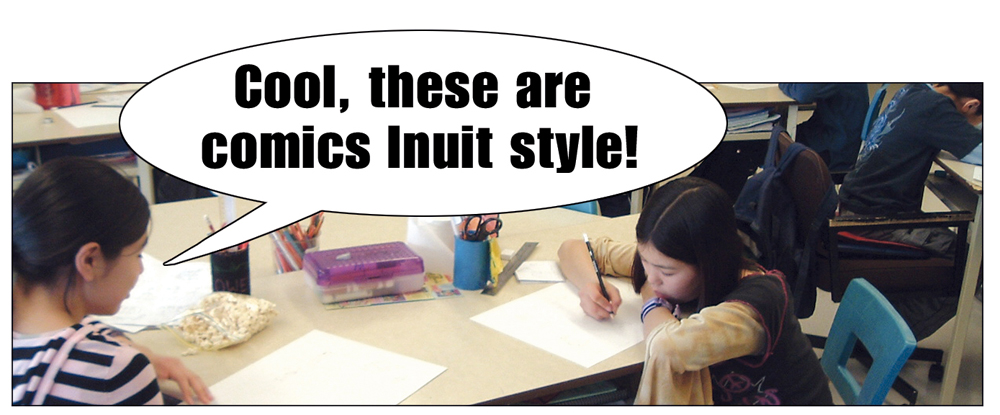
To promote literacy and help kids develop strategies against bullying, Montreal journalist and comic-book artist Rupert Bottenberg travelled to Kangiqsualujjuaq, Nunavik in northern Quebec this past February to teach high school students the fine art of creating comic strips.
Bottenberg came to the north as part of a program called “Don’t Touch My Board, Man,” an initiative that is overseen by non-profit organization Blue Metropolis, best known for its large annual Montreal literary festival.
Having taught the program several times in Montreal high schools, Bottenberg felt as though he was one of the most qualified people in the region to teach the program and he went to Nunavik with the hope of inspiring young people to follow in his footsteps. “Comics are the artistic medium that I grew up on and love the most. I have done so many different things within the context of comics – like creating them and organizing events and now I’m teaching comics,” said Bottenberg.
“The Inuit aesthetic lends itself perfectly to the comics medium. It’s because Inuit visual art is so simple, clear, graphic and bold. This is something that is absolutely necessary in comics because you are working with a very limited space. Comics are essentially narrative stories told in a sequence of images but those images have to be small so that you can fit any number of them on a page. So, there is not much room for being vague or grandiose,” said Bottenberg.
For one week, Bottenberg was a guest of the Kangiqsualujjuaq community and of Anne Lanteigne’s Grade 7 class at Ulluriaq School. He was warmly received by the students not just because he was a stranger in town bearing art and innovation from the south but also because the class’s math course was suspended for a week so that Bottenberg could work with the children during class time.
“This was one of the best success rates I have ever had with this particular project because students were actually sticking to the theme,” he said, noting the difficulty he had experienced previously with city students losing their focus. “I don’t know if they were tremendously enthusiastic about (the bullying theme) but they certainly worked with it. And they all ended up telling pretty much the same story with their pieces. They seemed to be willing to give us exactly what we were looking for and they did a serious job and had fun with it, which I know sounds like a contradiction,” said Bottenberg.
By the time Bottenberg left the community at the end of the week, the majority of his students had already completed their “boards.” Bottenberg felt that the program was such a success and that the students took so well to the medium that he wants to go back not only to work in the high school again in the same context but he also has some ideas of his own.
“I am actually quite interested in proposing a publishing project that would involve seeking out Elders to recount fables from Inuit mythology and history that could then be worked on by a bunch of teenagers. It would involve teenagers interviewing Elders, transcribing the stories into Inuktitut and then translating them into English and French and then furthermore getting several to illustrate and create a book. It’s an excellent way of communicating an important part of Inuit culture. There is a severe shortage of books in Inuktitut and this would be something that the teachers would be eager to get their hands on,” said Bottenberg.
For more information on Blue Metropolis and its literary programs, go to: http://bluemetropolis.org/index.php7id=52

